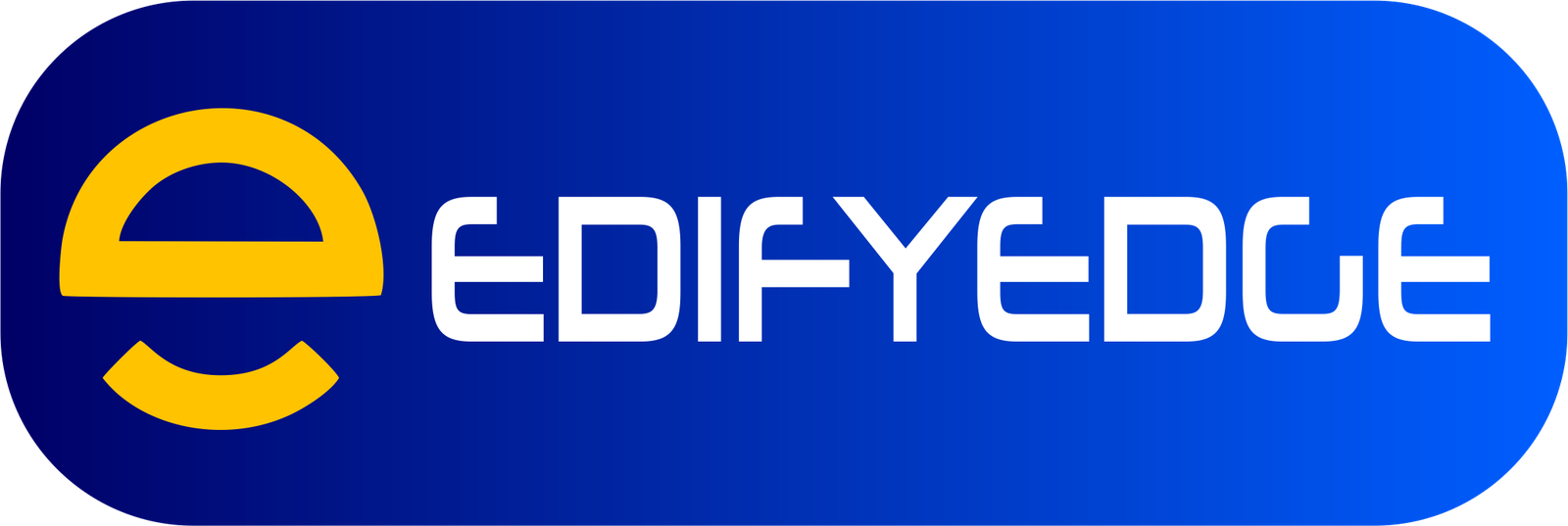What is a Business Acquisition Loan?
A business acquisition loan is a type of financing specifically designed to help individuals or companies purchase an existing business or acquire ownership interests in another company. This loan provides the necessary funds to cover the costs associated with acquiring a business, such as the purchase price, working capital, inventory, and other related expenses.
Business acquisition loans differ from traditional business loans in several ways. They are typically larger in size and have different underwriting criteria, as lenders evaluate the potential profitability and cash flow of the acquired business rather than solely relying on the borrower’s personal or existing business finances.
Unlike starting a new business from scratch, acquiring an established company often carries less risk due to the presence of an existing customer base, proven business model, and historical financial performance. However, lenders still conduct thorough due diligence to assess the viability of the acquisition and the borrower’s ability to successfully integrate and manage the acquired business.
Scenarios Where a Business Acquisition Loan is Useful
A business acquisition loan can be a valuable financing option in several scenarios:
Expanding into New Markets or Territories
By acquiring an existing business, you gain immediate access to its customer base, assets, and market presence. This can be an effective way to expand your operations into new geographic regions or product/service lines without starting from scratch.
Vertical or Horizontal Integration
Acquiring a supplier, distributor, or competitor can help you vertically or horizontally integrate your business, potentially increasing efficiency, reducing costs, and strengthening your market position.
Acquiring Talent and Intellectual Property
Some businesses are acquired primarily for their talented workforce, proprietary technologies, or valuable intellectual property, such as patents, trademarks, or copyrights.
Diversifying Your Business Portfolio
Acquiring a company in a different industry can help diversify your business portfolio, reducing risk and potentially opening up new revenue streams.
Increasing Market Share and Competitiveness
By acquiring a competitor or complementary business, you can quickly increase your market share, eliminate competition, and potentially achieve economies of scale.
Business Acquisition Loans
A business acquisition loan is a type of financing used to purchase an existing company or business. These loans can be obtained from various sources, including banks, alternative lenders, and government-backed programs like those offered by the Small Business Administration (SBA).
SBA Loans
The SBA offers several loan programs designed to assist small business owners in acquiring existing businesses. One of the most popular options is the SBA 7(a) loan program, which provides financing for a wide range of business purposes, including acquisitions. These loans are partially guaranteed by the SBA, making them less risky for lenders and potentially easier to qualify for.
Commercial Loans
Traditional commercial loans from banks and credit unions are another option for financing a business acquisition. These loans typically require a substantial down payment, collateral, and a strong credit history. Commercial lenders will thoroughly evaluate the acquisition target, the buyer’s experience, and the overall business plan before approving financing.
Seller Financing
In some cases, the seller of the business may be willing to provide financing for the acquisition. This arrangement, known as seller financing or an owner carry-back, can be advantageous for both parties. The buyer may find it easier to secure financing, while the seller can potentially receive a higher sale price or ongoing income from the loan payments.
Equity Financing
Equity financing involves raising capital by selling ownership shares in the acquired business. This approach can be attractive for buyers who lack the necessary cash or creditworthiness for traditional loans. However, it dilutes the buyer’s ownership stake and may require giving up some control over the business.
When considering a business acquisition loan, it’s essential to carefully evaluate the costs, terms, and potential returns of the investment. Working with experienced professionals, such as business brokers, accountants, and lawyers, can help ensure a smooth and successful acquisition process.
What is a Business Acquisition Loan?
A business acquisition loan is a type of financing designed to help entrepreneurs or existing business owners purchase another company or acquire ownership interests in one. These loans provide the necessary capital to fund the acquisition of an existing business, including the costs associated with the transaction, such as legal fees, due diligence expenses, and working capital requirements.
When considering a business acquisition loan, lenders typically evaluate several key factors:
Credit Score
Your personal and business credit scores play a crucial role in determining your eligibility for a business acquisition loan and the associated interest rates. Lenders want to ensure that you have a strong credit history and a proven track record of responsible borrowing and repayment.
Down Payment
Most lenders require a substantial down payment when financing a business acquisition. The down payment amount can range from 10% to 30% or more of the total purchase price. A higher down payment demonstrates your commitment to the acquisition and reduces the lender’s risk exposure.
Business Plan
Lenders will scrutinize your business plan to assess the viability of the acquisition and your ability to successfully integrate and operate the acquired business. A well-crafted business plan should include financial projections, market analysis, management strategies, and a clear path to profitability.
Collateral
Since business acquisition loans are considered high-risk investments, lenders often require collateral to secure the loan. Collateral can include personal assets, such as real estate or investment accounts, as well as business assets like equipment, inventory, or accounts receivable.
Interest Rates for Business Acquisition Loans
When acquiring a business, the interest rate on your loan is a crucial factor to consider. Interest rates for business acquisition loans can vary widely depending on several factors, such as the lender, the loan amount, the borrower’s creditworthiness, and the overall economic conditions.
Generally, business acquisition loans tend to have higher interest rates compared to traditional business loans. This is because lenders perceive these loans as riskier investments, as they are used to finance the purchase of an existing business, which may come with inherent uncertainties and challenges.
The interest rate you receive will depend on your creditworthiness, including your personal and business credit scores, income, assets, and debt-to-income ratio. Lenders will also evaluate the financial health and performance of the business you are acquiring, as well as the industry it operates in and its growth potential.
It’s essential to shop around and compare interest rates from various lenders, including banks, credit unions, and online lenders. Some lenders may offer lower rates for borrowers with excellent credit and a strong financial profile, while others may specialize in working with borrowers with less-than-perfect credit.
Finding a Business
When considering a business acquisition, one of the first steps is to identify a suitable target company. This involves researching industries, markets, and companies that align with your strategic goals and acquisition criteria. Look for businesses with strong financials, a skilled workforce, established customer base, and growth potential.
Once you’ve identified potential targets, conduct a preliminary valuation to assess their worth and determine an appropriate offer price. Valuations typically consider factors such as assets, liabilities, cash flow, market position, and growth prospects.
Valuation
Accurate valuation is crucial in an acquisition, as it helps ensure you don’t overpay for the target company. There are several valuation methods, including:
-
Asset-based valuation: Calculates the company’s worth based on its tangible and intangible assets, such as real estate, equipment, intellectual property, and brand value.
-
Income-based valuation: Estimates the company’s value based on its ability to generate future cash flows, often using discounted cash flow analysis.
-
Market-based valuation: Compares the target company to similar businesses that have recently been acquired or are publicly traded, adjusting for differences in size, growth, and risk.
It’s advisable to use multiple valuation methods and consult with experienced professionals, such as investment bankers or business valuation experts, to ensure an accurate and defensible valuation.
Due Diligence
Due diligence is a comprehensive investigation of the target company’s financial, legal, operational, and other aspects. This process aims to verify the accuracy of the information provided, identify potential risks and liabilities, and ensure compliance with relevant laws and regulations.
Key areas of due diligence include:
-
Financial due diligence: Reviewing financial statements, tax returns, contracts, and other financial records to assess the company’s financial health and accuracy of reporting.
-
Legal due diligence: Examining legal documents, contracts, intellectual property rights, pending lawsuits, and regulatory compliance to identify potential legal risks.
-
Operational due diligence: Evaluating the company’s operations, management team, processes, systems, and competitive position to assess its strengths, weaknesses, and growth potential.
-
Environmental and regulatory due diligence: Assessing the company’s compliance with environmental regulations, industry-specific rules, and other relevant laws and regulations.
Thorough due diligence is essential to make an informed decision and negotiate appropriate terms and conditions for the acquisition.
Negotiations
Once due diligence is complete, the next step is to negotiate the terms of the acquisition with the target company’s owners or representatives. Key areas of negotiation include:
-
Purchase price: Based on the valuation and due diligence findings, negotiate a fair and mutually acceptable purchase price.
-
Payment structure: Determine the payment method (e.g., cash, stock, or a combination) and whether the payment will be made upfront or structured over time.
-
Post-acquisition integration: Discuss plans for integrating the acquired company into your organization, including management structures, operational processes, and cultural integration.
-
Transition and retention: Negotiate terms for retaining key employees, customers, and suppliers to ensure a smooth transition and continuity of operations.
-
Representations and warranties: Negotiate representations and warranties from the sellers regarding the accuracy of information provided and the absence of undisclosed liabilities.
-
Non-compete and non-solicitation agreements: Consider including non-compete and non-solicitation clauses to protect your interests after the acquisition.
Skilled negotiation is crucial to reaching an agreement that benefits both parties and sets the stage for a successful acquisition and integration.
Business Acquisition Loans: Financing Growth and Opportunity
Business acquisition loans are a type of financing designed to help companies purchase another existing business or its assets. These loans provide the necessary capital to facilitate mergers, acquisitions, or the outright purchase of a company, enabling businesses to expand their operations, enter new markets, or acquire valuable assets and intellectual property.
Acceptable Uses
Business acquisition loans can be used for a variety of purposes, including:
Asset Purchases: Companies can use these loans to acquire tangible assets such as equipment, machinery, real estate, or inventory from another business. This can be particularly useful when expanding into a new line of business or acquiring complementary assets to enhance existing operations.
Working Capital: Acquiring a new business often requires additional working capital to support operations during the transition period. Business acquisition loans can provide the necessary funds to cover expenses such as payroll, inventory, and other operating costs until the acquired business is fully integrated.
Refinancing Debt: In some cases, businesses may use acquisition loans to refinance existing debt held by the target company. This can help consolidate debt obligations and potentially secure more favorable terms or interest rates.
Reasons for Acquiring a Business
Acquiring an existing business can offer several strategic advantages for companies looking to grow and expand their operations. One of the primary reasons is to achieve economies of scale, which can lead to cost savings and increased efficiency. By combining operations, resources, and personnel, the acquiring company can potentially reduce redundancies, streamline processes, and leverage shared infrastructure and assets.
Another key driver for business acquisitions is gaining access to new markets or customer bases. An established company with a strong foothold in a particular region or industry can provide the acquiring firm with an immediate entry point into those markets, bypassing the challenges and time-consuming process of building a presence from scratch. This can accelerate growth and revenue generation opportunities.
Furthermore, acquisitions can be a means to acquire valuable expertise, intellectual property, or specialized knowledge that would be difficult or costly to develop internally. By acquiring a company with a skilled workforce, proprietary technologies, or unique industry insights, the acquiring firm can quickly enhance its capabilities and competitiveness within its sector.
Integration Issues
When acquiring another business, one of the biggest challenges is integrating the two companies’ operations, systems, processes, and cultures. Merging different organizational structures, IT infrastructures, and business practices can be a complex and daunting task. Incompatible technologies, data formats, and workflows can lead to inefficiencies, disruptions, and loss of productivity during the integration phase. Failure to properly align and harmonize the acquired company’s operations with the existing business can undermine the strategic rationale for the acquisition and impede the realization of potential synergies.
Personal Savings
Utilizing personal savings is often one of the simplest and most straightforward ways to fund a business acquisition. By tapping into your own financial resources, you maintain complete control and ownership of the acquired company without incurring debt or giving up equity. However, this approach may not be feasible for larger acquisitions or if your personal savings are limited. It’s crucial to carefully assess the financial requirements of the acquisition and ensure you have a contingency plan in case additional funds are needed.
Investor Funding
Seeking investment from individuals, such as angel investors or venture capitalists, can provide the necessary capital for a business acquisition. These investors typically contribute funds in exchange for an ownership stake in the acquired company. While this approach can provide substantial financial backing, it also means sharing control and profits with the investors. It’s essential to thoroughly vet potential investors, negotiate favorable terms, and have a solid business plan that demonstrates the acquisition’s potential for growth and returns.
Crowdfunding
Crowdfunding platforms have emerged as an alternative financing option for business acquisitions. However, it’s crucial to create a compelling campaign, offer attractive incentives, and comply with relevant regulations.
Business Line of Credit
Interest is typically only charged on the amount borrowed, and repayments can be made over an agreed-upon period. However, qualifying for a substantial line of credit can be challenging, and the acquired business’s assets may need to be used as collateral.
Business Acquisition Loan Documentation
When applying for a business acquisition loan, lenders will require extensive documentation to assess the viability of the acquisition and the borrower’s ability to repay the loan. Key documents typically include:
- Acquisition proposal or purchase agreement detailing the target company, purchase price, and terms
- Historical financial statements (income statements, balance sheets, cash flow statements) for both the acquiring company and the target acquisition for the past 3-5 years
- Projected financial statements and forecasts showing the combined entity’s future performance and cash flows
- Business valuation reports supporting the purchase price and potential synergies
- Sources and uses of funds statement outlining how the loan proceeds will be utilized
- Bios and resumes highlighting the management team’s relevant experience
- Debt schedule listing existing loans or liabilities that may be assumed
- Tax returns for recent years
- Legal documents like articles of incorporation, franchise agreements, or lease contracts
Lenders scrutinize this documentation thoroughly to underwrite the loan request appropriately.
Due Diligence, Integration Planning, Financial Modeling, and Expert Guidance
Acquiring a business is a complex process that requires careful due diligence, meticulous integration planning, robust financial modeling, and expert guidance. These critical elements are essential for ensuring a successful acquisition and maximizing the potential returns on your investment.
Due Diligence
Due diligence is the cornerstone of any successful business acquisition. It involves a comprehensive evaluation of the target company’s financial health, legal standing, operational processes, market position, and potential risks. Thorough due diligence helps identify potential issues, uncover hidden liabilities, and validate the company’s stated performance and projections. This process often involves reviewing financial statements, contracts, intellectual property, and conducting on-site inspections.
Integration Planning
Once the due diligence phase is complete and the acquisition is finalized, the next critical step is integration planning. Effective integration planning ensures a smooth transition, minimizes disruptions, and maximizes synergies between the two entities. It also addresses cultural integration, change management, and communication strategies to ensure employee buy-in and retention.
Financial Modeling
Financial modeling is a crucial aspect of any business acquisition. It involves creating detailed projections and forecasts to evaluate the potential financial impact of the acquisition on your business. This includes analyzing revenue streams, cost structures, cash flows, and potential synergies. Financial modeling helps assess the acquisition’s viability, identify potential risks and opportunities, and determine the optimal financing structure. It also plays a vital role in valuation and negotiation processes.
Expert Guidance
Navigating the complexities of a business acquisition often requires the expertise of professionals with specialized knowledge and experience. Engaging experienced legal counsel, financial advisors, and industry experts can provide invaluable guidance throughout the acquisition process. These experts can assist with due diligence, negotiation strategies, structuring the deal, securing financing, and ensuring compliance with relevant regulations. Their insights and guidance can help mitigate risks, identify potential pitfalls, and maximize the chances of a successful acquisition.
Real-world Acquisition Stories, Lessons Learned, and Best Practices
One of the best ways to understand business acquisition loans is to look at real examples of companies that have used them successfully. These stories can provide valuable insights into the process, challenges faced, and lessons learned.
Company A’s Acquisition Journey
[Provide a detailed case study of a company that used an acquisition loan to expand, including the challenges they faced, how they navigated the process, and the ultimate outcome.]
Lessons Learned:
- [Key lesson 1 from Company A’s experience]
- [Key lesson 2 from Company A’s experience]
- [Key lesson 3 from Company A’s experience]
Company B’s Strategic Acquisition
[Provide another case study of a company that used an acquisition loan to gain a competitive advantage or enter a new market, highlighting their approach and the results achieved.]
Best Practices for Successful Acquisitions
Based on the experiences of companies like A and B, as well as insights from industry experts, here are some best practices to consider when pursuing an acquisition using a business loan:
-
Conduct Thorough Due Diligence: [Explain the importance of thoroughly vetting the target company, its financials, and the potential synergies or risks involved.]
-
Develop a Comprehensive Integration Plan: [Discuss the need for a well-thought-out plan to integrate the acquired company’s operations, personnel, and systems with the existing business.]
-
Secure Adequate Financing: [Emphasize the importance of securing sufficient funding through an acquisition loan or other means to complete the transaction and support the combined entity’s growth.]
-
Communicate Effectively: [Highlight the need for clear and consistent communication with all stakeholders, including employees, customers, and investors, throughout the acquisition process.]
-
Foster a Positive Culture: [Stress the importance of creating a cohesive and positive culture within the combined organization, addressing potential cultural clashes, and promoting a shared vision and values.]
By learning from real-world examples and following best practices, companies can increase their chances of successful acquisitions and leverage the power of business acquisition loans to fuel growth and expand their operations.
Lenders, Brokers, and Consultants for Business Acquisition Loans
Lenders: Traditional lenders, such as banks and credit unions, are a common source for business acquisition loans. These institutions typically offer various loan products, including term loans, lines of credit, and commercial mortgages. However, they may have stricter eligibility requirements, including a strong credit history, substantial collateral, and a detailed business plan.
Brokers: Business loan brokers act as intermediaries between borrowers and lenders. They have access to a wide network of lenders, including banks, alternative lenders, and private investors. Brokers can help you navigate the complex loan application process, identify suitable lenders, and negotiate favorable terms. While their services come with fees, they can save you time and increase your chances of securing financing.
Consultants: Business acquisition consultants provide valuable expertise and guidance throughout the acquisition process. They can assist with due diligence, valuation, negotiation, and financing strategies.
When working with lenders, brokers, and consultants, it’s essential to thoroughly research their credentials, reputation, and track record. Seek recommendations from trusted sources, read reviews, and carefully review their fees and terms of service.



